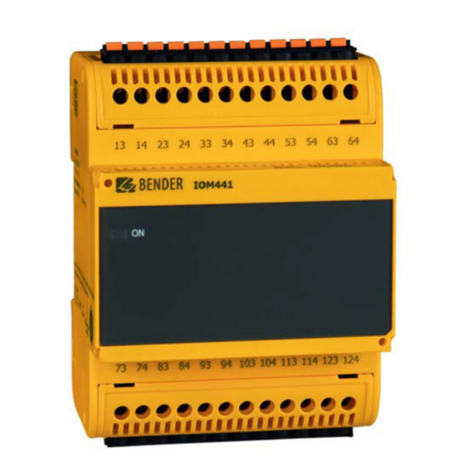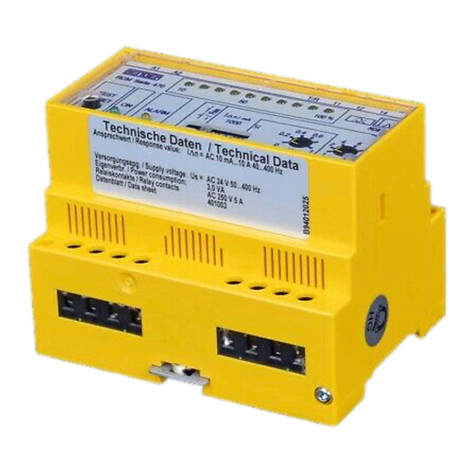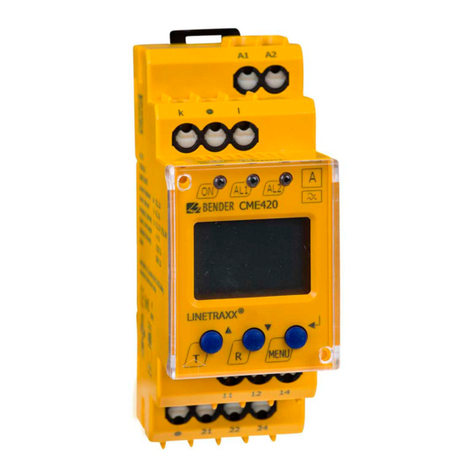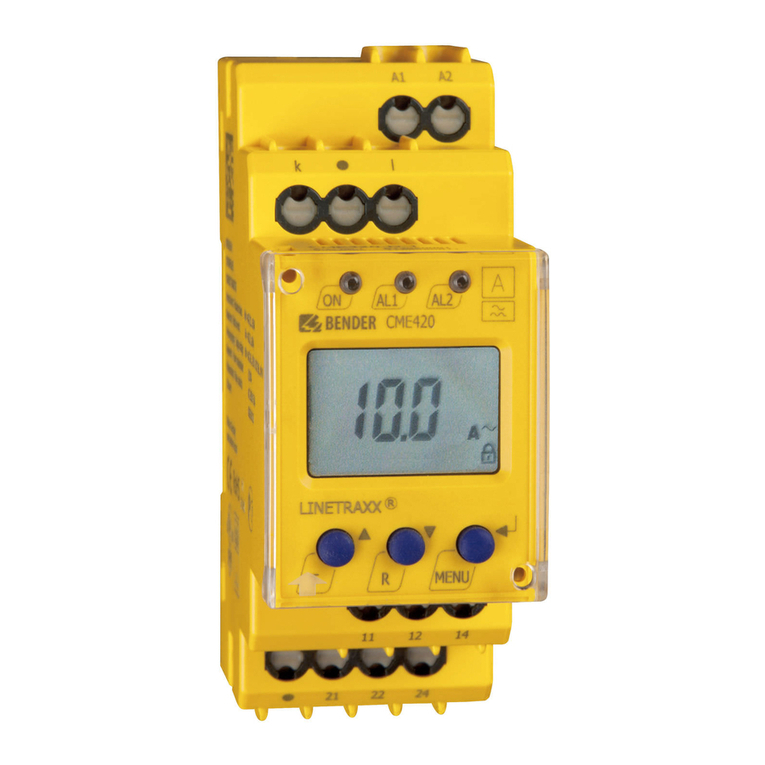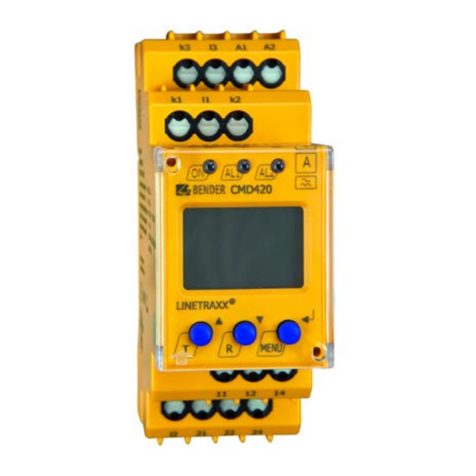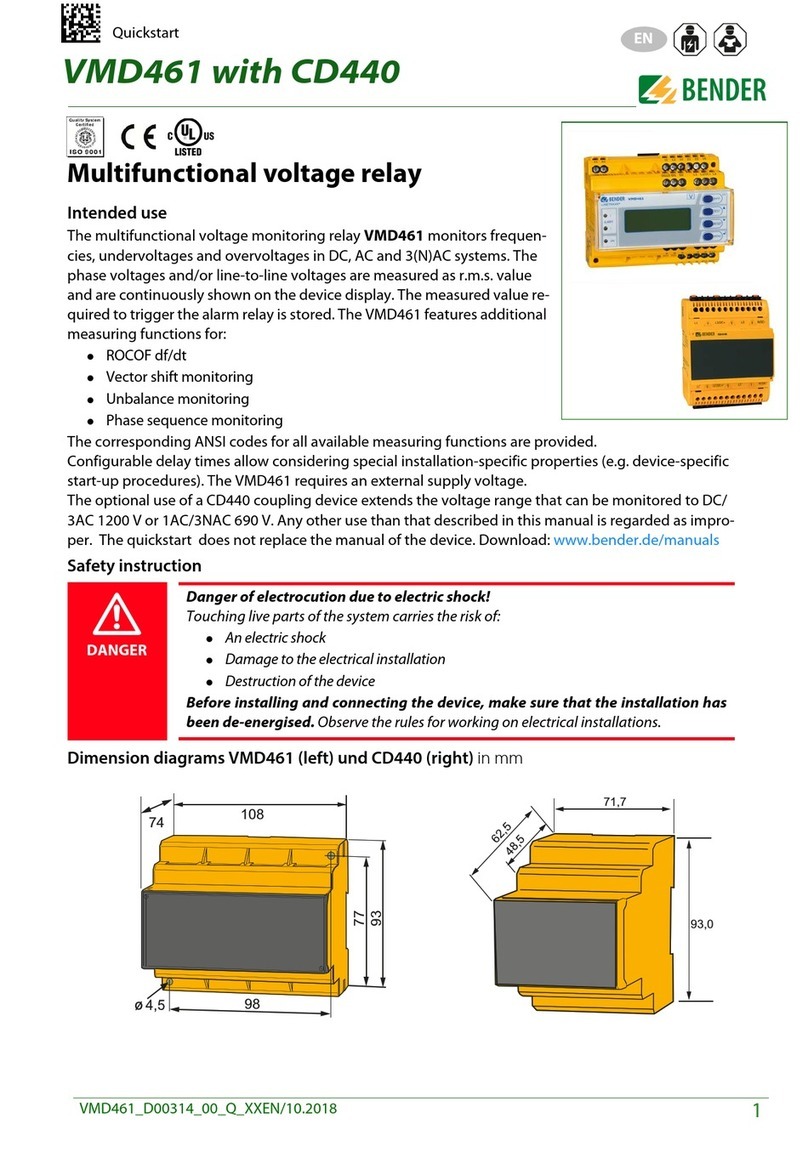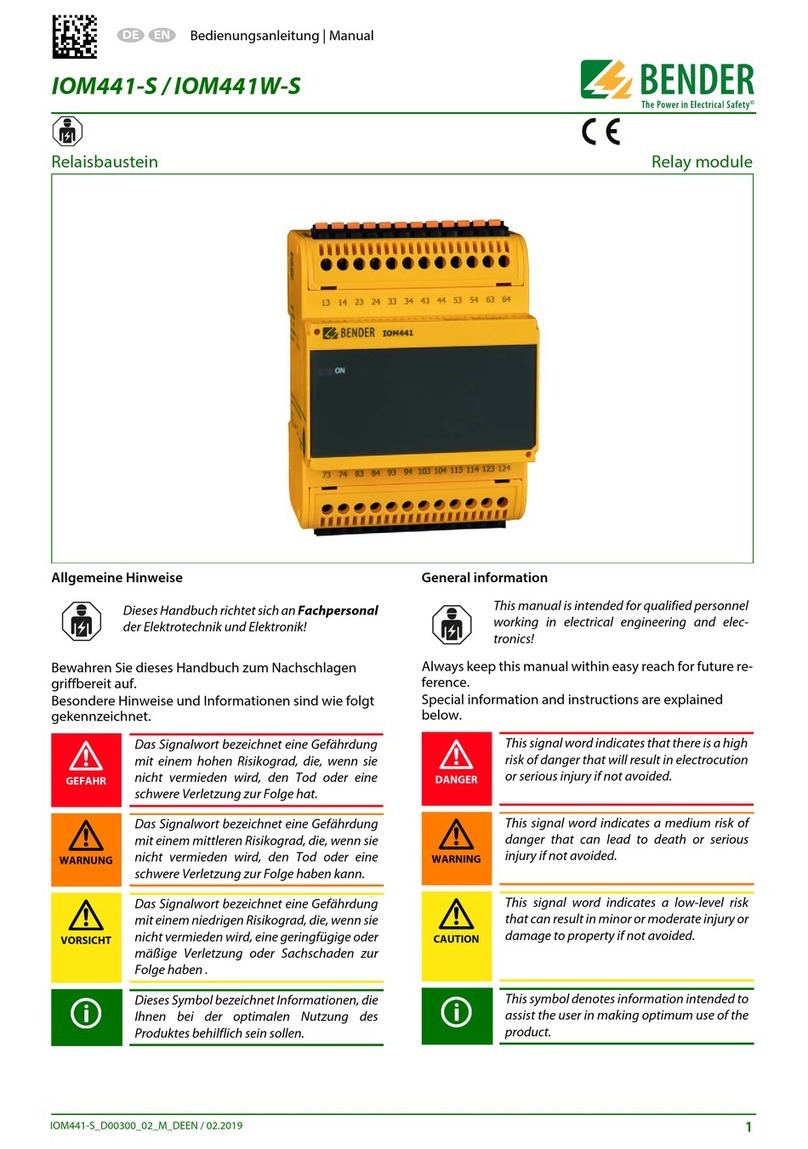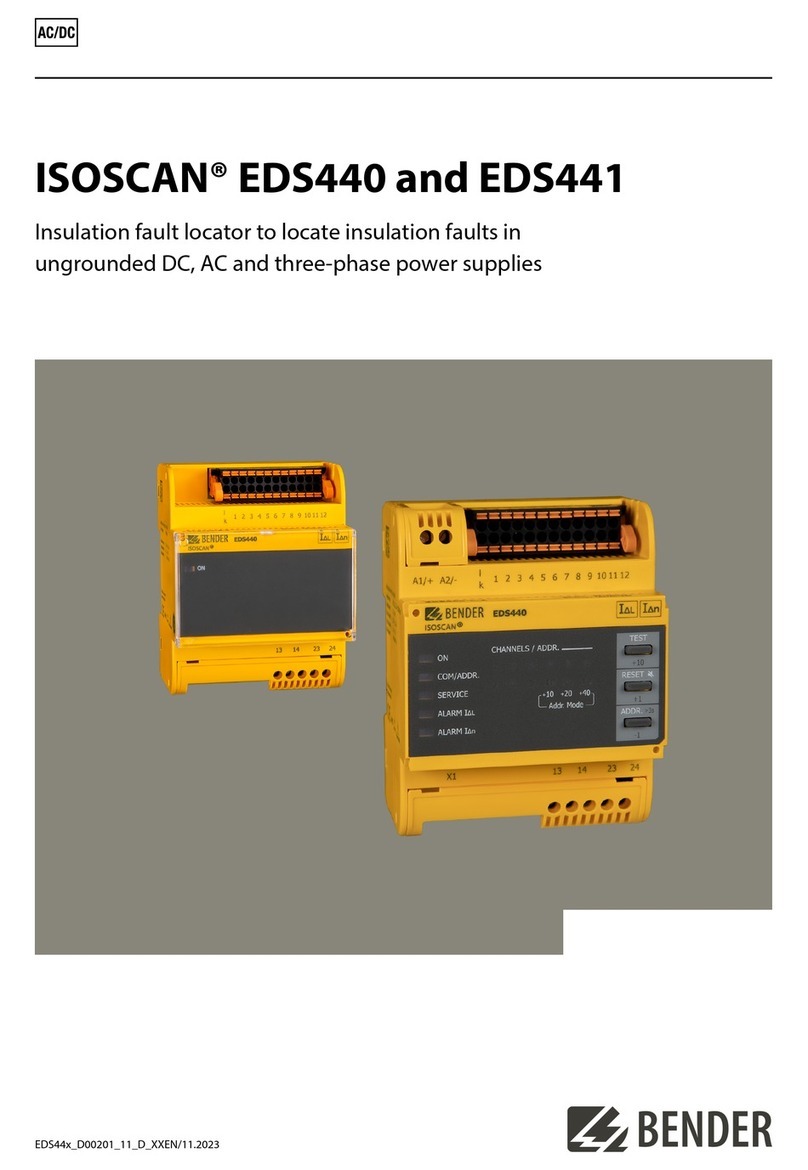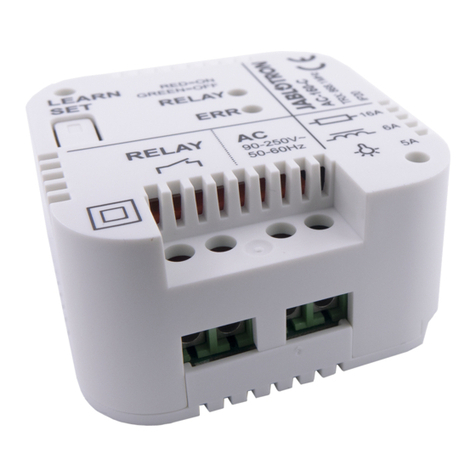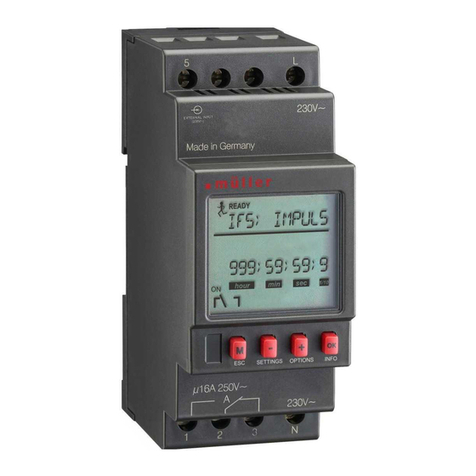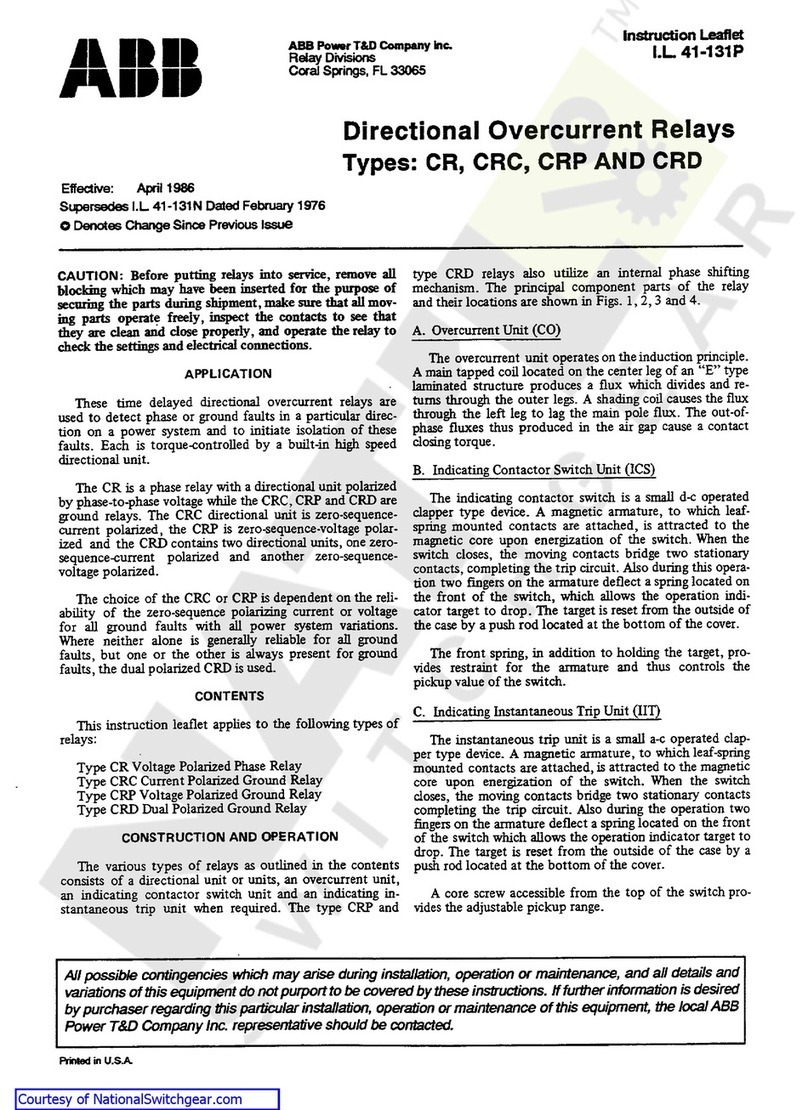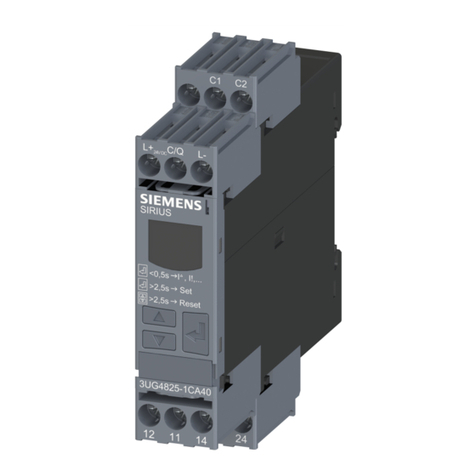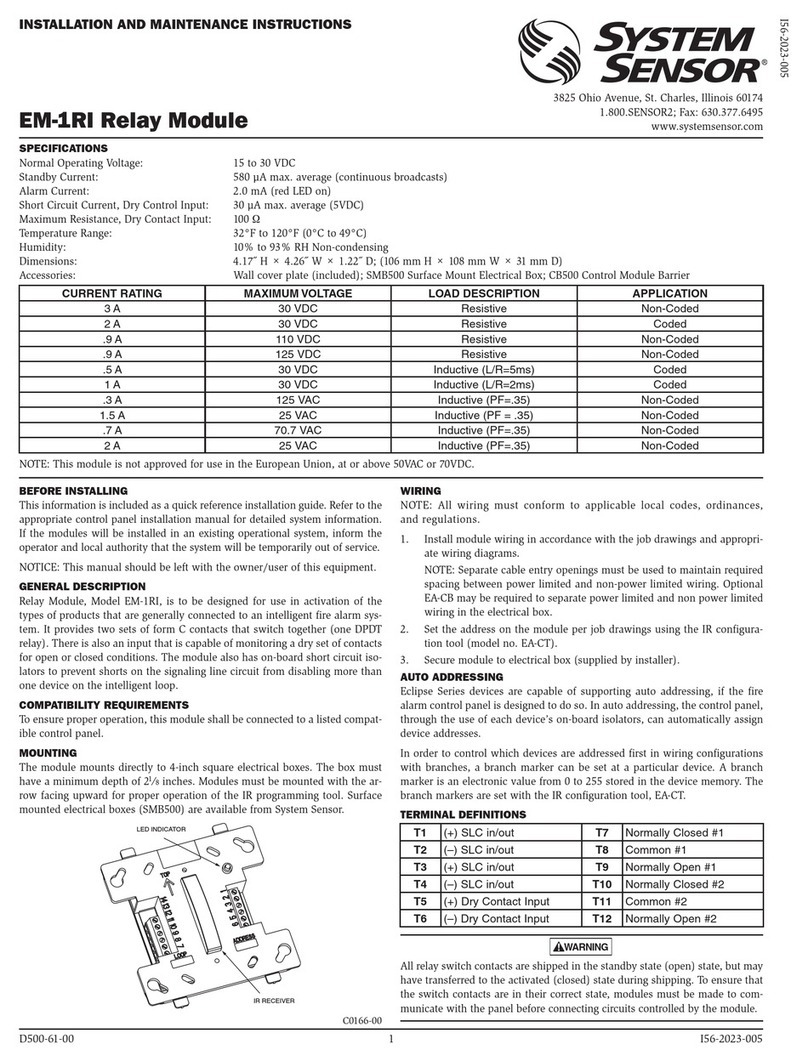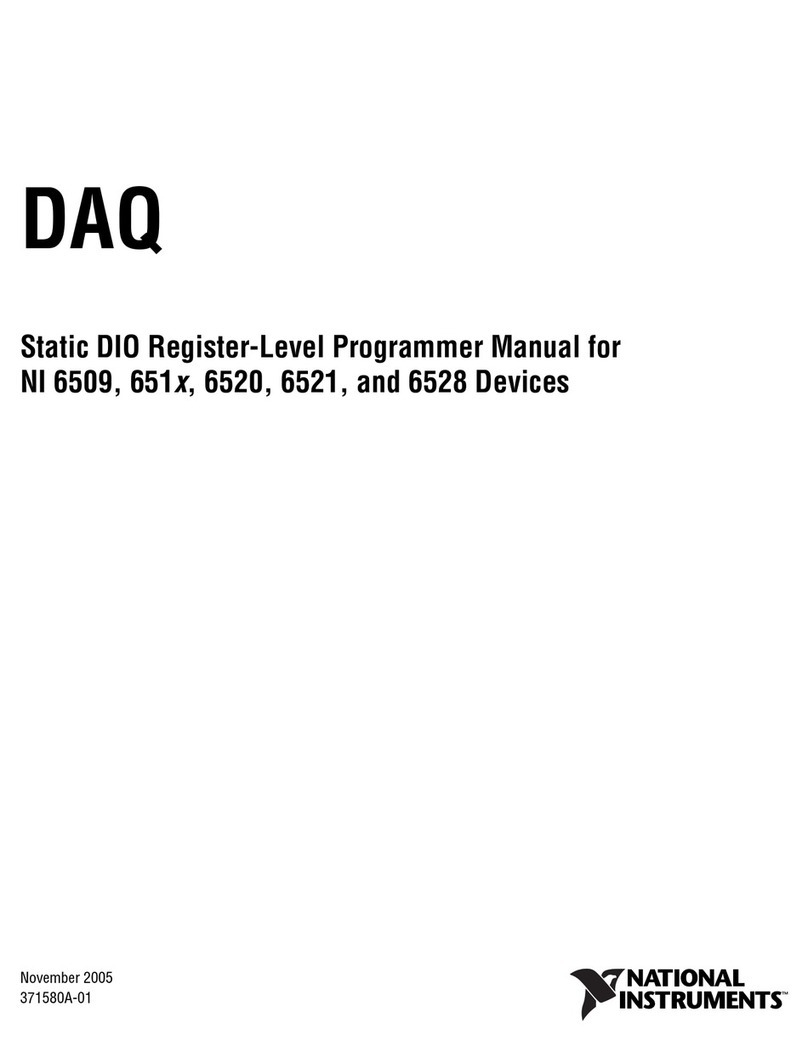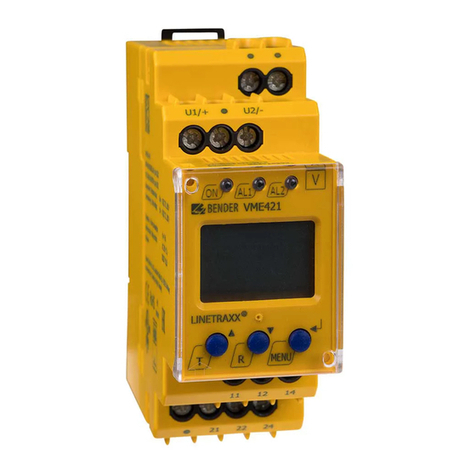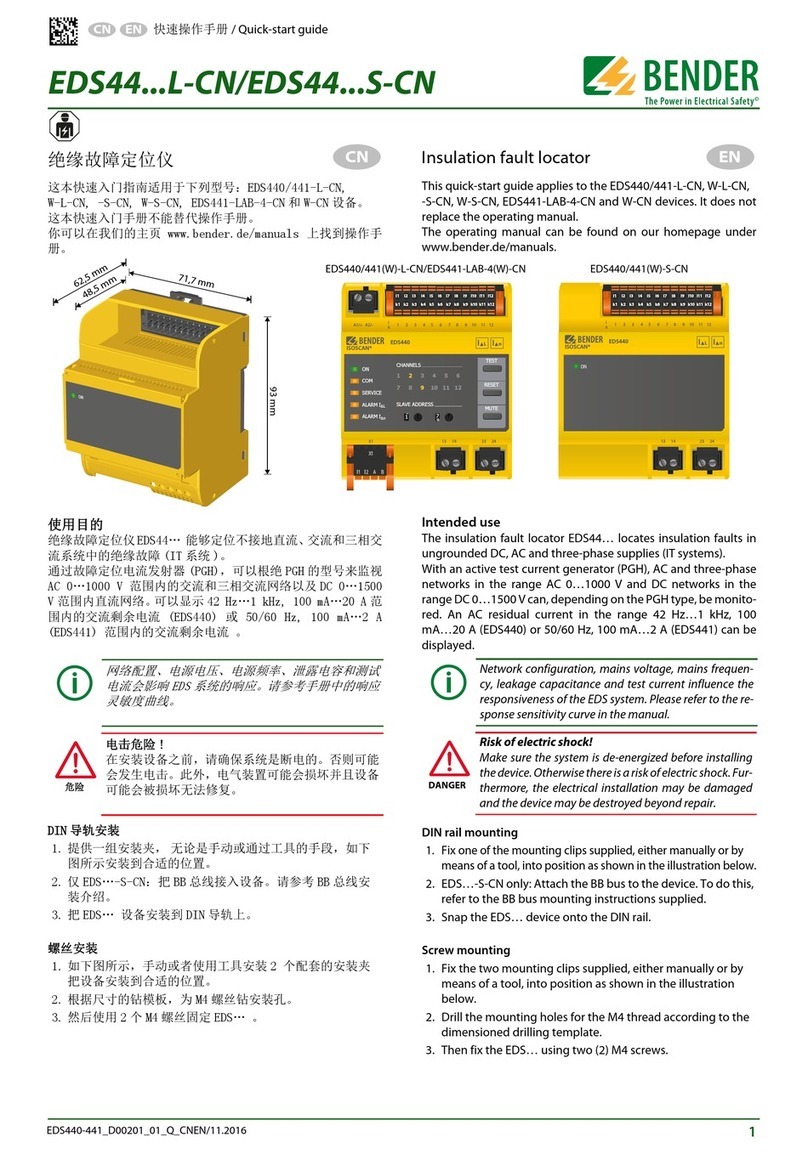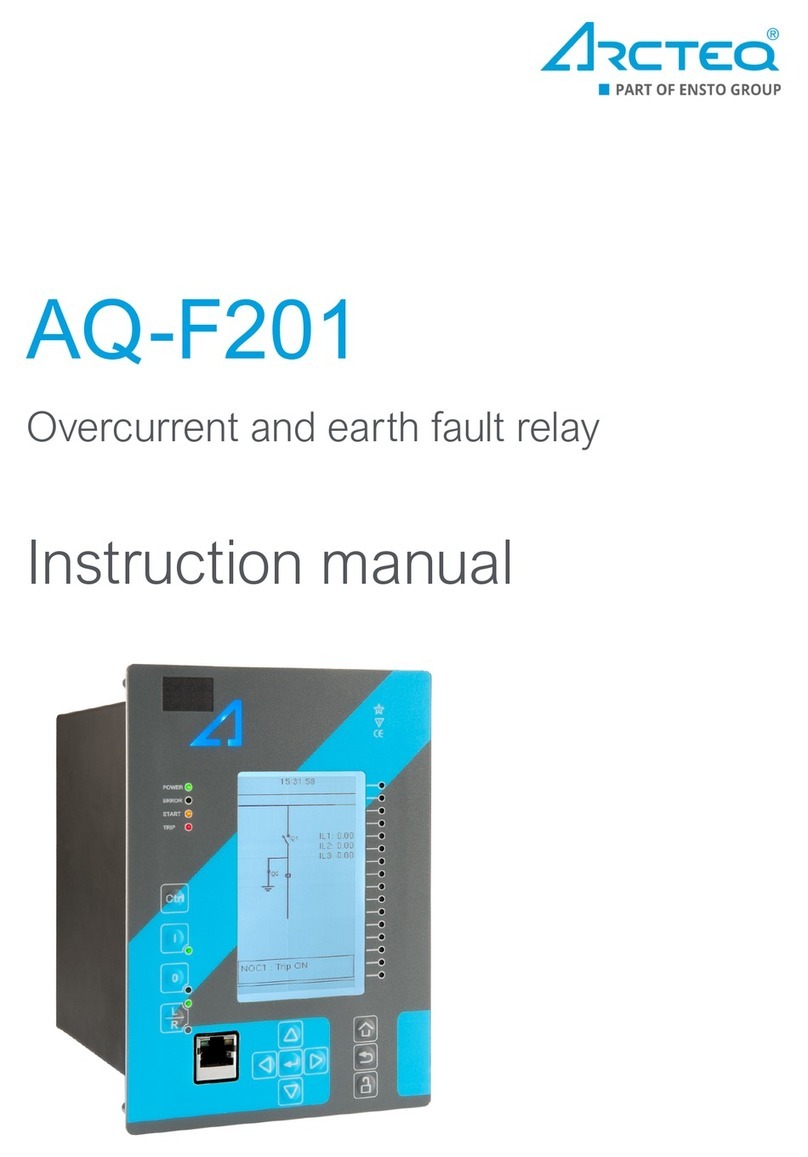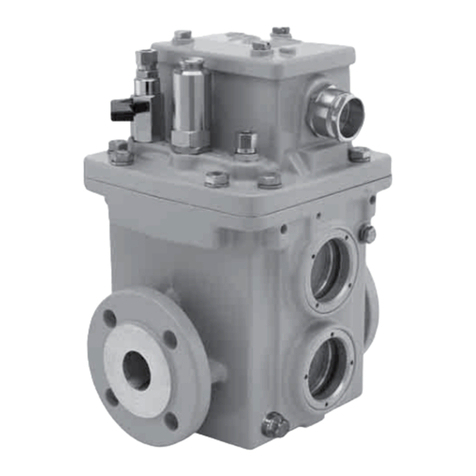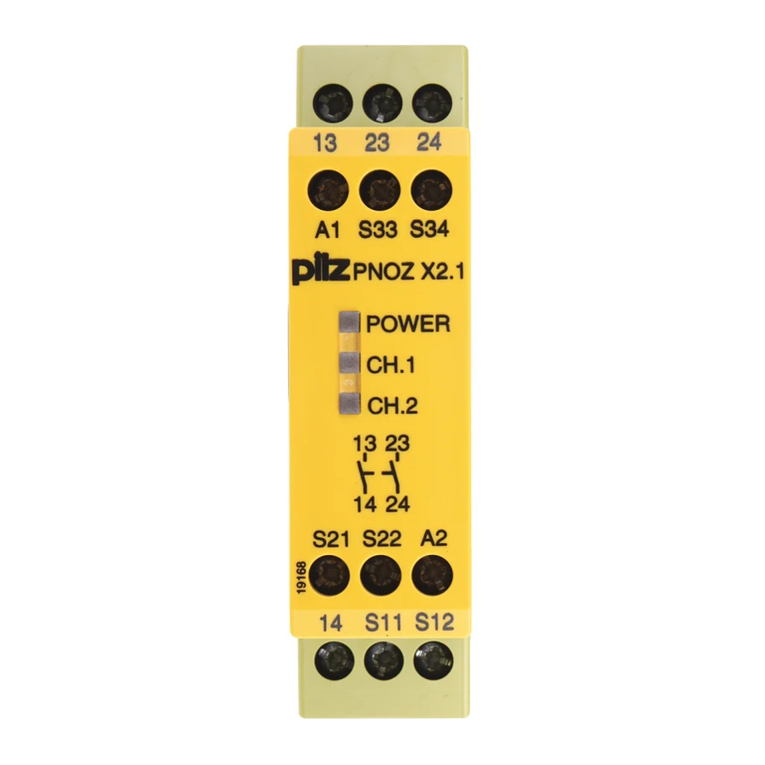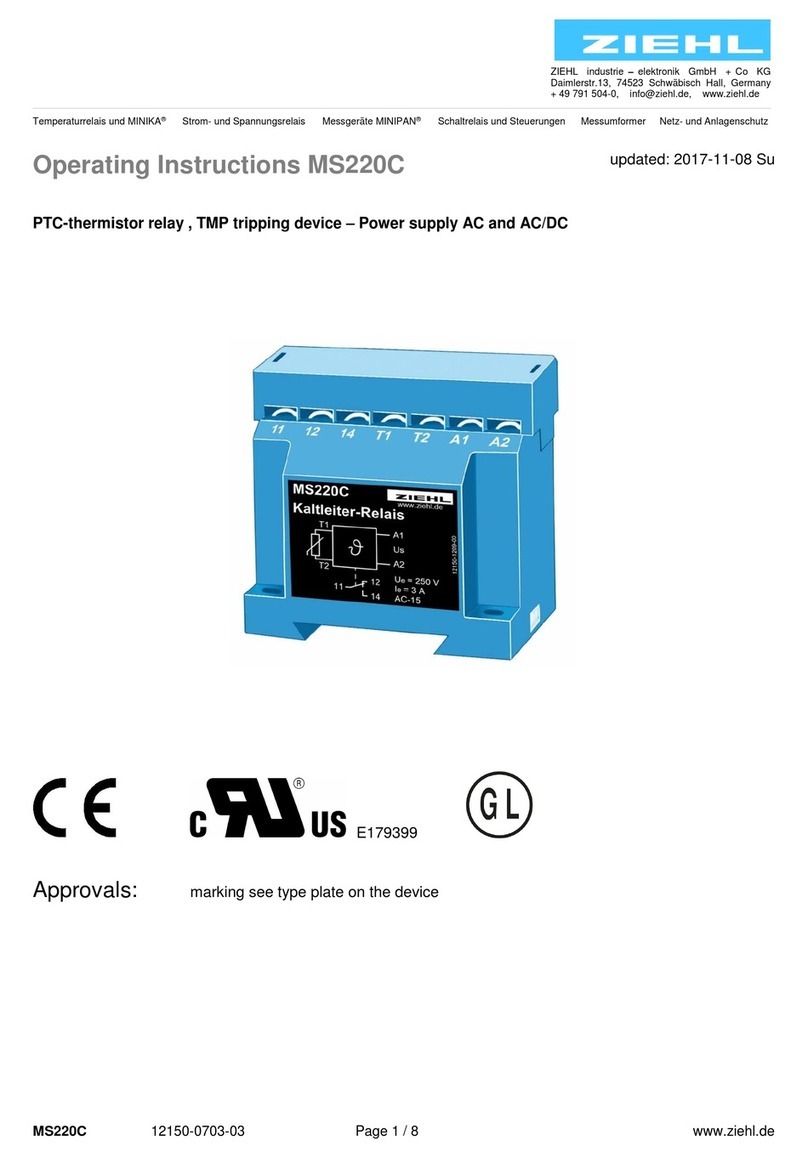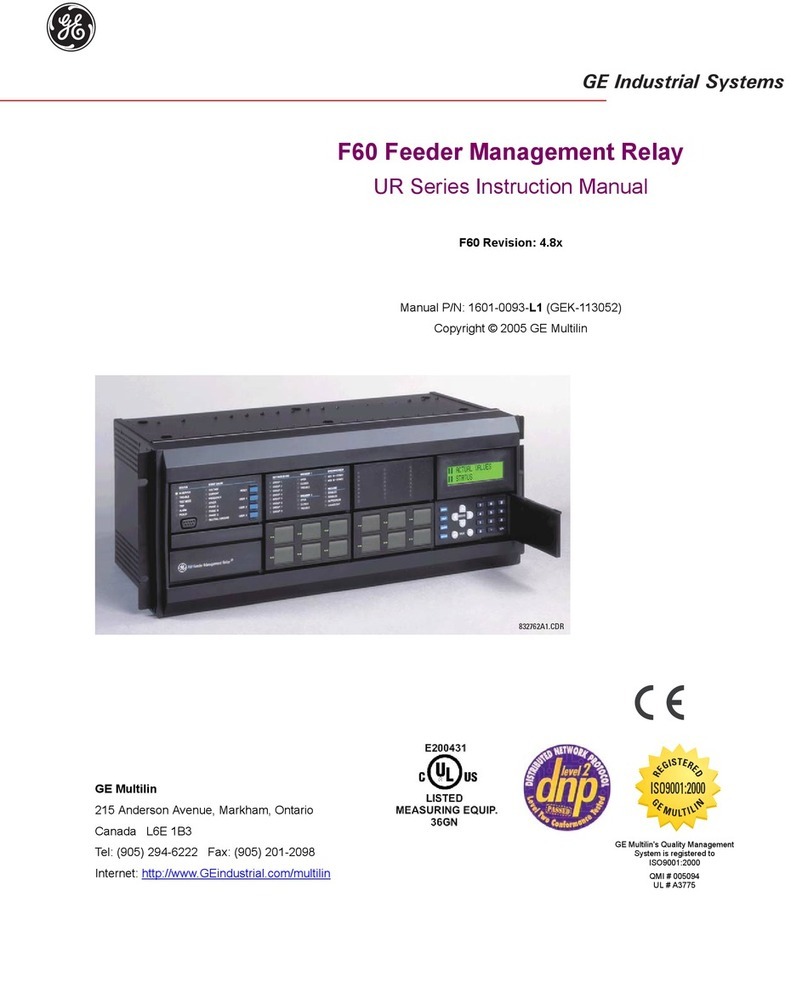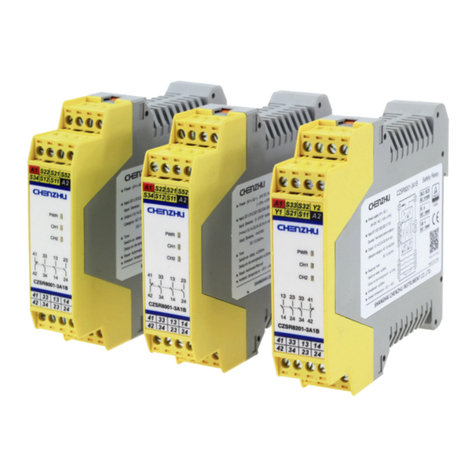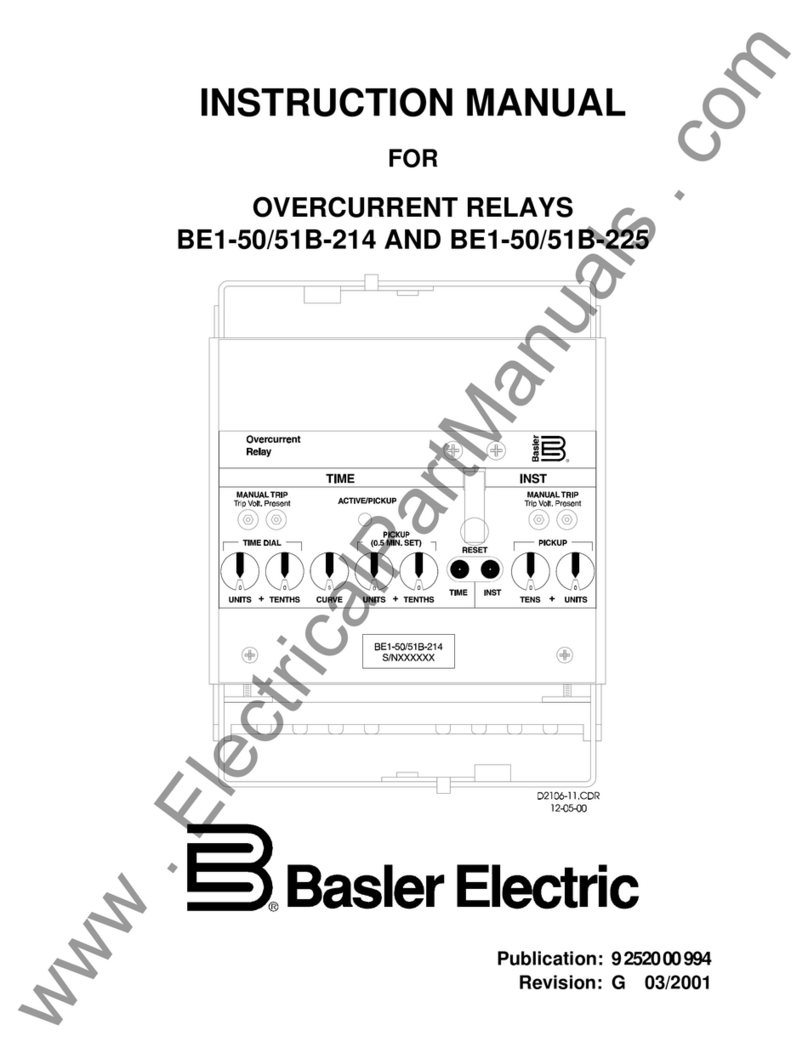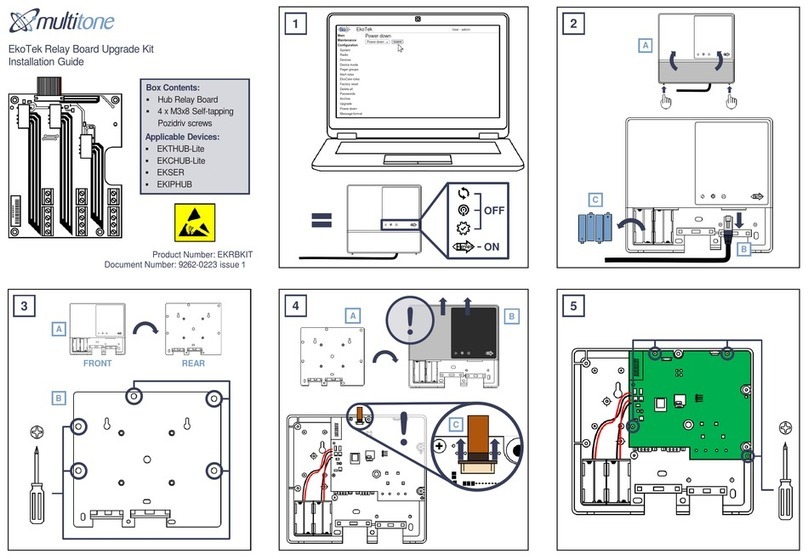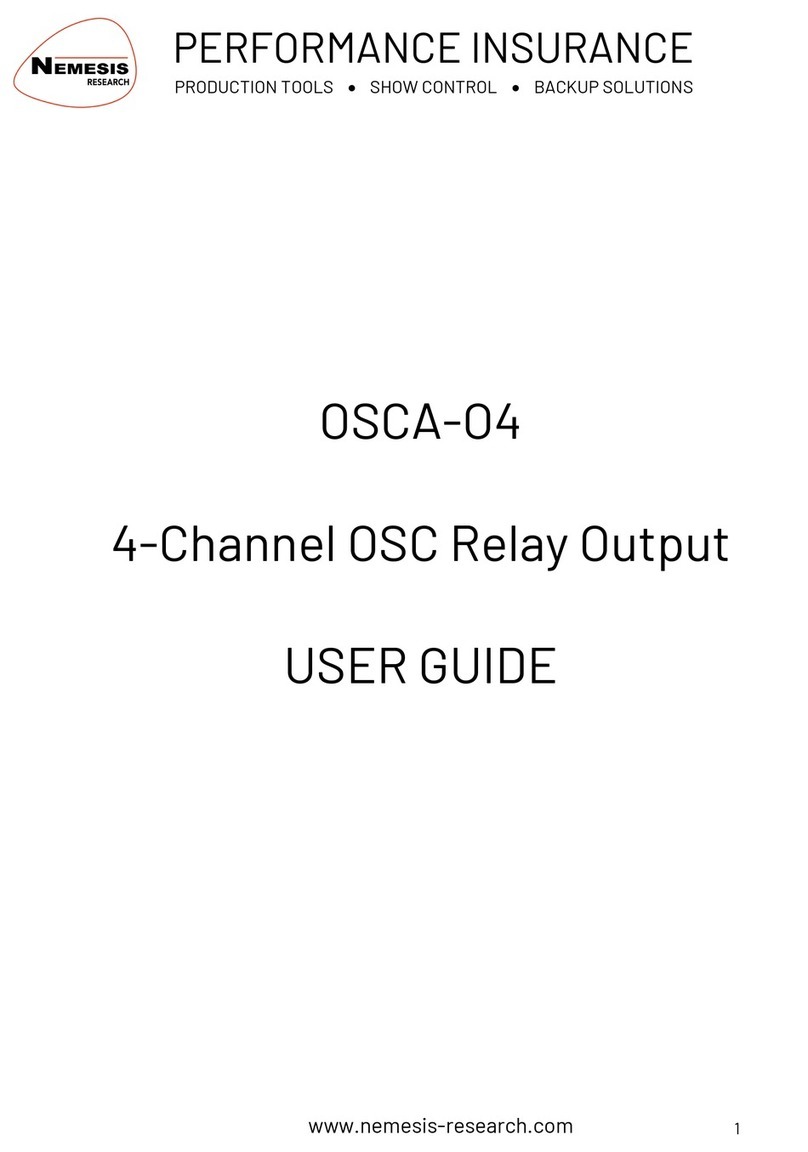
T M
Document
NAE1038030
• 10.2012 • ©
Bender
Inc.
• Page
1/1
• Side
1/2
Bender Inc. • USA: 800.356.4266 / 610.383.9200 / info@bender.org • Canada: 800.243.2438 / 905.602.9990 / [email protected] • www.bender.orgCME420
Installation Bulletin / Reference Guide
This document is intended as a reference guide for installing and using a BENDER CME420 AC cur-
rent relay. This document includes installation, setup, and usage instructions. For complete details,
including installation, setup, settings, and troubleshooting, refer to the CME420 user manual, docu-
ment number TGH1400en. This document is intended as a supplement and not a replacement to the
complete user manual.
Only qualied maintenance personnel shall operate or service this equipment. These instructions
should not be viewed as sucient for those who are not otherwise qualied to operate or service this
equipment. This document is intended to provide accurate information only. No responsibility is as-
sumed by BENDER for any consequences arising from use of this document.
Installation
Mounting
CME420 series devices may be DIN rail mounted, or screw mounted using the black clips lo-
cated on the top and bottom of the device. Screw mounting requires an extra black clip (article
number B98060008, sold separately).
!DANGER
• Disconnect all power before servicing.
• Observe all local, state, and national
codes, standards, and regulations.
HAZARD OF ELECTRIC SHOCK,
EXPLOSION, OR ARC FLASH
Wiring - General
Refer to gure 1 for wiring the CME420. For systems less
than 16 A, the device may be directly wired in series with
the circuit, or utilize an external x/5 ratio current trans-
former. For systems greater than 16 A, an external x/5 ra-
tio current transformer is required. Use minimum AWG
24, maximum AWG 12 size wire. Refer to CME420 series
user manual for complete technical details.
1. External supply voltage; 5A fuse
required for internal device pro-
tection
2. Direct system connection with no
current transformer (less than 16
A)
3. System connection with current
transformer
4. Alarm relay K1: SPDT contact
5. Alarm relay K2: SPDT contact
Figure 1 - CME420 wiring diagram
Front Panel Display
1. LED “ON” (green): Illuminates when
power is applied to the device. Flashes
when the CT connection alarm is active.
2. LED “AL1” (yellow): Illuminates when
the prealarm is activated. Flashes when
the CT connection alarm is active.
3. LED “AL2” (yellow): Illuminates when
the main alarm is activated. Flashes
when the CT connection alarm is active.
4. Backlit LCD display
5. TEST / UP button: Activates self-test /
scrolls up inside main menu.
6. RESET / DOWN button: Resets device /
scrolls down inside main menu.
7. MENU / ENTER button: Activates main
menu / Confirms (momuntary push) or
goes back a step (held > 1.5 s) inside
main menu.
1 2 3
4
5 6 7
Figure 2 - CME420 front display
1
2
3
4
Menu Flow Chart for Common Settings
Figure 4 through gure 8 on the reverse side of this document contain ow charts for modify-
ing commonly used features and settings in the CME420’s main menu. Not all available fea-
tures are listed in this document. For more information, consult the CME420 user manual.
R
T
Menu Legend
MENU / ENTER button
DOWN ARROW button
UP ARROW button
Momuntary button push
< 1.5 s
Hold button for at least 1.5 s,
then release
> 1.5 s
Wiring - Contacts
Using a normally closed or normally open contact utilizes two factors: wiring out of the proper
terminal, and setting the respective contact to normally energized or deenergized operation.
Refer to the chart below for relay conditions. For changing the energized state of the contact,
refer to “Figure 7 - Contact operation” on the reverse side of this document.
The factory default for the CME420 is normally deenergized operation for relays K1 and K2.
5
Dimensions
Dimensions in inches (mm).
1.42” (36)
2.78”
(70.5)
1.87”
(47.5)
1.22” (31.1)
2.66” (67.5)
1.77” (45)
3.54” (90)
Normally energized mode (N/E)
Failsafe mode
“N/C”in device settings menu
Energized in the normal state
Relay will switch when the alarm is
activated, or when supply voltage
to the device is lost.
Power ON, normal state (no alarms)
Power OFF
Power ON, alarm state
11-12 OPEN
11-14 CLOSED
11-12 CLOSED
11-14 OPEN
11-12 CLOSED
11-14 OPEN
21-22 OPEN
21-24 CLOSED
21-22 CLOSED
21-24 OPEN
21-22 CLOSED
21-24 OPEN
Normally deenergized mode (N/D)
Non-failsafe mode
“N/O”in device settings menu
Energized in the alarm state
Relay will switch when the alarm is
activated.
Power ON, normal state (no alarms)
Power OFF
Power ON, alarm state
11-12 CLOSED
11-14 OPEN
11-12 CLOSED
11-14 OPEN
11-12 OPEN
11-14 CLOSED
21-22 CLOSED
21-24 OPEN
21-22 CLOSED
21-24 OPEN
21-22 OPEN
21-24 CLOSED
Relay Operation Setting Device Alarm State K1 STATE K2 STATE
Device Relay Conditions

